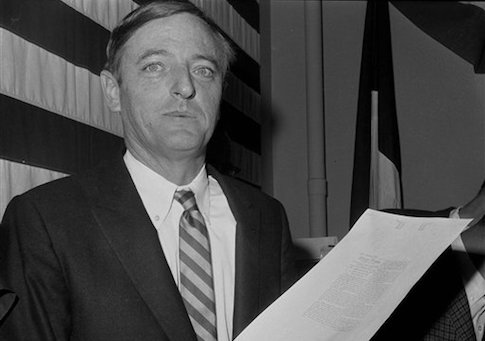Although the media is oftentimes associated with political slant, insults, and shouting down opponents in today’s culture, there was a time when people could hold intellectual conversations on policy and political philosophy.
In Open to Debate: How William F. Buckley Put Liberal America on the Firing Line, Heather Hendershot, a professor at the Massachusetts Institute of Technology who studies conservative media history, shows her readers how William F. Buckley championed conservatism through intellectual creativity and confidence in his ideas. By debating the left in an intelligent manner and not being afraid to confront conservatives with whom he disagreed, Buckley was able to propel his brand of conservatism to prominence.
Buckley, the founder of National Review and host of the TV show Firing Line, held lengthy debates and conversations with an array of people who held differing opinions. Buckley allowed every guest on Firing Line to present their views, using the entirety of the show’s 60-minute segments (later changed to 30-minute segments) to engage with them and present his reasons for agreeing or not.
When presenting his ideas, Buckley made an effort to separate conservatism from fringe racists and anticommunist conspiracy theorists, to show the country that conservatism was about standing for positive principles that can appeal to the broader populace.
An intellectual who graduated from Yale, Buckley could hold intelligent, civilized conversations with his guests at a time when the conservative movement had a problem with conspiracy theorists who did a poor job defending conservative policies–similar to Alex Jones’ recent "1776 will commence again" rant a few years back on the Piers Morgan show.
Hendershot shows where Buckley stood on some of the key issues of the latter half of the 20th century, such as McCarthyism, Watergate, and the Civil Rights Act. She includes back-and-forth dialogue between Buckley and his guests to help illustrate his views.
Buckley had some of the world’s most prominent figures on his show, including Ronald Reagan, Richard Nixon, Margaret Thatcher, and Christopher Hitchens, but he also, importantly, allowed people with fringe beliefs on his show, including black and white nationalists. Even though Firing Line was meant to discuss conservatism in an intelligent way, Hendershot notes, Buckley gave voices to people with unpopular views, who might not normally get media coverage.
Hendershot discusses Buckley’s essential role in the modern conservative movement with his introduction of fusionism, which promoted a fusion of traditional conservatism, libertarianism, and anticommunism. Although some did not appreciate his melding of ideas, thinking that such views could not exist together, his views became increasingly popular during the 1980s.
When supporters of free markets, social conservatism, and a hawkish, anticommunist foreign policy all rallied around Ronald Reagan for president, Buckley saw his fusion coming alive.
Although he would often criticize conservatives for not being sufficiently principled—and even once ran for office as an Independent because he did not see the Republican Party as conservative enough—he almost always found common ground with Reagan.
Although Reagan did much for his own campaign, Buckley was someone who helped paved the way for the conservative movement of the 1980s as one of its top defenders.
Hendershot does an effective job summarizing how Buckley put liberals—and even some conservatives—on the firing line.
Young conservatives who want to understand how Reagan-style conservatism succeeded in the 1980s, or why older conservatives want to reminisce about some of the movement’s best years, will enjoy this book.
Hendershot gives an abundance of helpful background information on Buckley, but she allows readers to see his arguments in his own words. Moreover, she gives the reader plenty of dialogue to work with so that individuals can see how Buckley was so effective at defending the conservative movement. Readers may glean helpful lessons from Buckley’s experience that can be applied in today’s political environment.
